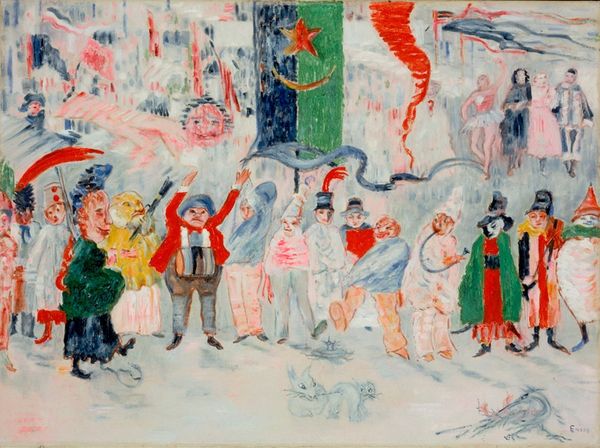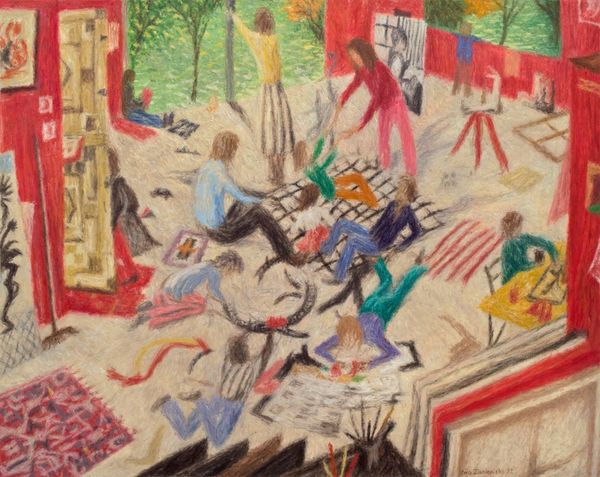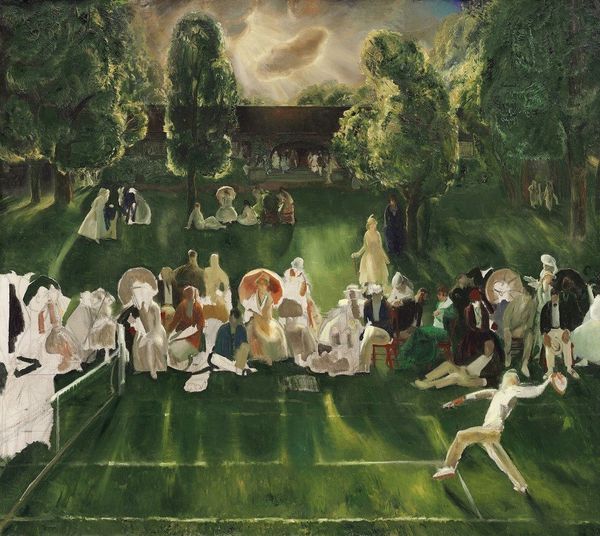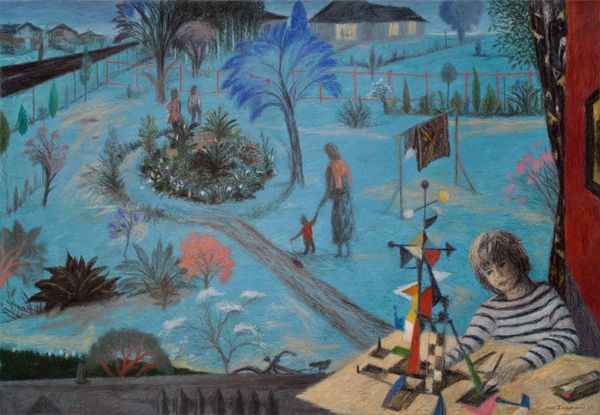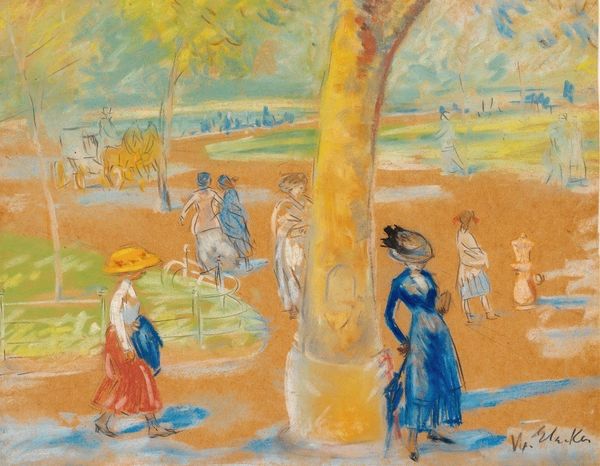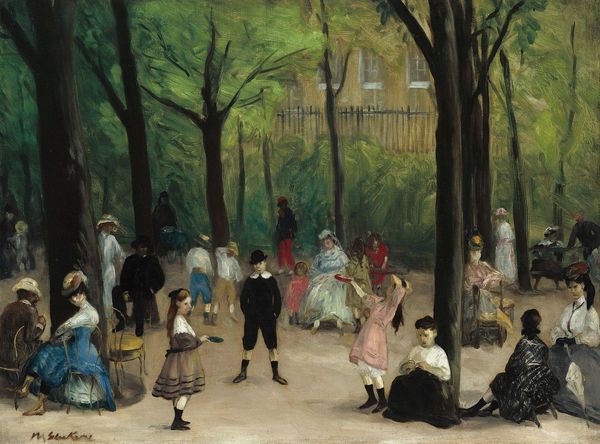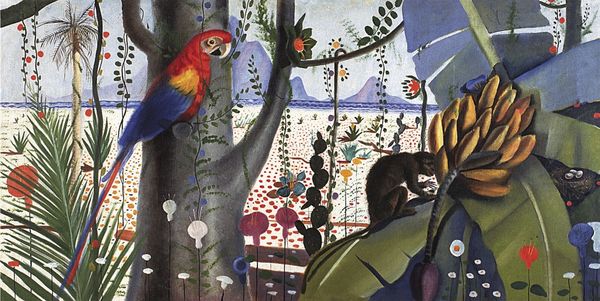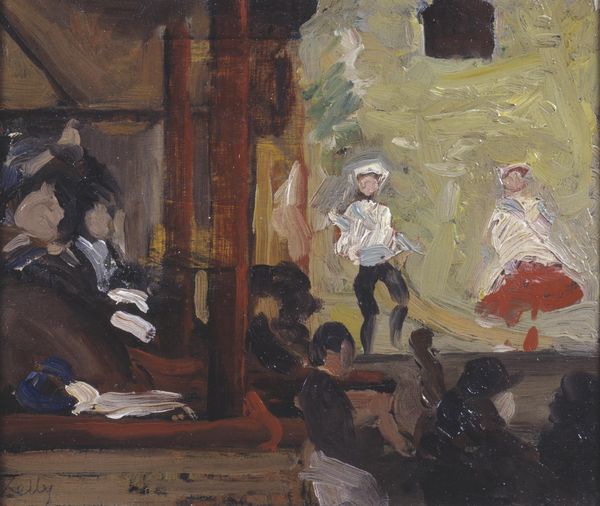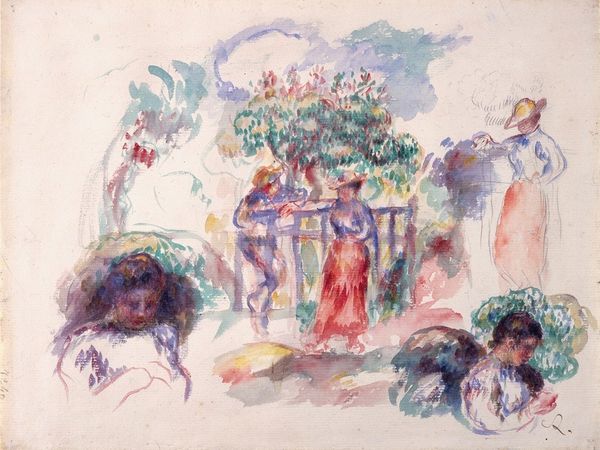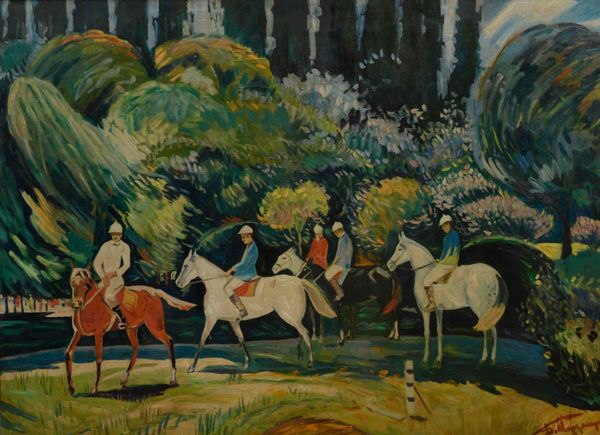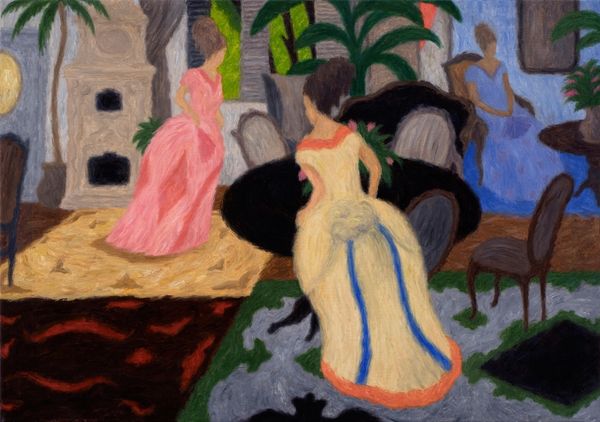
Dimensions: frame: 874 x 1087 x 90 mm support: 699 x 921 mm
Copyright: © The Estate of Carel Weight | CC-BY-NC-ND 4.0 DEED, Photo: Tate
Editor: Carel Weight's painting, "Allegro Strepitoso," shows a chaotic scene at a zoo. The brushstrokes seem hurried, matching the subjects' panicked expressions. What can you tell me about this piece? Curator: The title itself points to Weight's interest in the tempo and process of creating this scene. The application of paint, thick in some areas, thin in others, mirrors the frenzied activity depicted. Consider how the artist's labor, the very act of painting, influences our understanding of the social anxieties represented. Editor: So, the way he painted it impacts how we interpret the people's reaction? Curator: Precisely. The materiality of the paint and the speed of its application become metaphors for the social and emotional unrest captured in the scene. Thinking about it, the consumption of leisure, as seen at a zoo, clashes with the apparent danger and fear. Editor: It's interesting how the making of the art reflects the anxiety within the art. Curator: Yes, examining the process reveals so much about the cultural context.
Comments
tate 7 months ago
⋮
http://www.tate.org.uk/art/artworks/weight-allegro-strepitoso-t05836
Join the conversation
Join millions of artists and users on Artera today and experience the ultimate creative platform.
tate 7 months ago
⋮
Julian Trevelyan created this work as part of Mass Observation’s Worktown project in Bolton in 1938. Artworks inspired by the town were used to gauge local popular reaction to contemporary art. Trevelyan, who identified himself as a surrealist, exhibited this and two other works at the AIA Whitechapel exhibition. Fellow AIA members, William Coldstream and Graham Bell were also part of the Mass Observation Bolton project. Gallery label, September 2024
